The most worrying to any soapmaker is DOS (dreaded orange spot), which is when the free oils turn rancid .. This seems to be most common when working with oils that have a short shelf life, or when soap is exposed to heat for periods of time, like being left in a car etc ..

Ash is purely an aesthetic issue creating a thin surface layer on the soap .. It can be washed off or left to naturally dissolve during use - it won't harm skin! As yet we don't have a definite understanding of why this occurs on some bars, though there are a number of theories about Lye, Salts, specific Fragrant & Essential Oils, &/or Exposure to Air ..

Partial Gell is also an aesthetic issue where the centre of the soap gells during the saponification process (*gelling is when the soap turns transparent and a Vaseline like consistency in the mould)but the outside edges don't, causing a 'picture frame' look on the bar .. Some soapers prefer to fully gell their soap and thus insulate or even cook their batches, others try to reduce any chance of it gelling by putting their moulds in the freezer ..
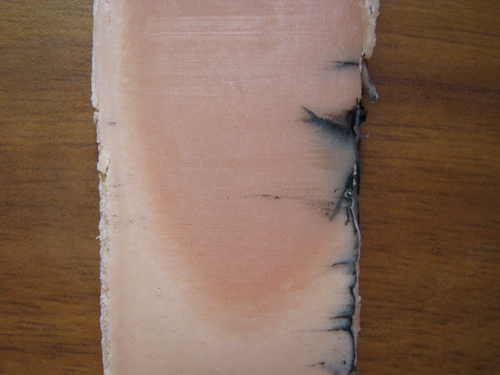
Goats Milk soap is very popular for it's luxurious creamy lather and gentle cleansing ability, however when making it precautions need to be made to make sure the milk doesn't burn when the Sodium Hydroxide (NaOH) is added, or it will turn a dark orange colour and give off the horrible smell of Amonia .. It's common practice to freeze the milk and sit it in an ice bath as you slowly add & stir in the NaOH .. 90% of the soap I make uses Goats Milk for the total liquid, and I've not had a problem with it before this particular batch .. I showed this picture to a number of soapers and our best guess is that it's burned milk solids .. On reflection I was using up the last of the GM I had in the freezer (which had been in there for a couple of months) and had some lumps of fat/cream on top ..
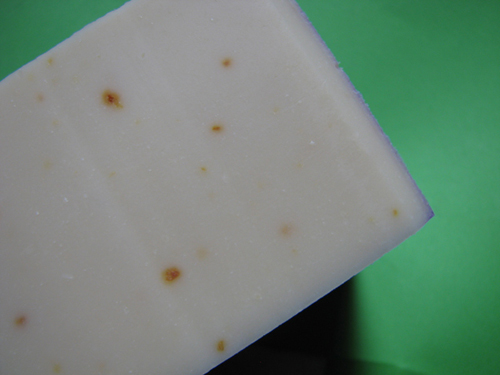
Discolouration is another issue soapers must face when using specific fragrances, especially those containing Vanillin as this will darken over time, sometimes even causing the soaps lather to be brown! Other fragrances will turn the bars yellow, and some have no effect on colour at all .. This picture shows the same bar of 'Very Vanilla' soap and was taken over a week:
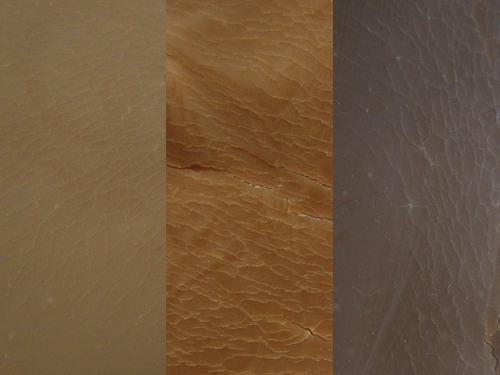
Weeping can be caused by poor or unbalanced oil choice when formulating a recipe, or high humidity .. It is not generally a dark colour such as in this image, but as I mentioned above this soap used a vanillin rich fragrance that caused discolouration and thus the weeping too is brown ..

Salt bars often show this weeping/sweating too due to the humectant quality of the soap combined with humidity:
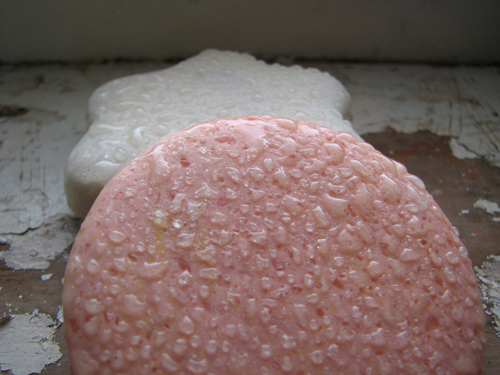
Wet cracking is not that well known in soaping circles, so from my limited research I've discovered it can be due to formulation (My experience was with a high Tallow/Coconut blend) and occurs when bars of soap dry rapidly after a good soak ..
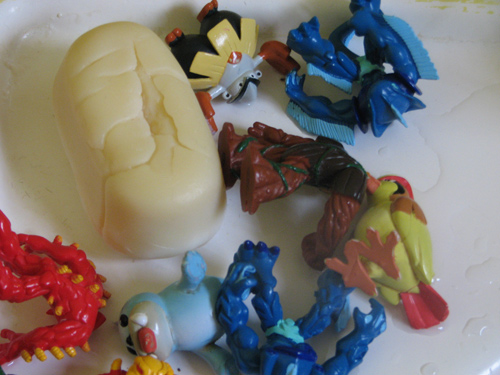
The following two photo's were sent to me by Sharon of { Platypus Dreams Gourmet Bodycare } - Thanks Heaps for sharing these and allowing me to post them Sharon! {{hugs}}
Lye Spots/Streaks – soap not being mixed enough in the soap pot or mixed in properly .. (pictures taken 03-2007 used with permission from Platypus Dreams)
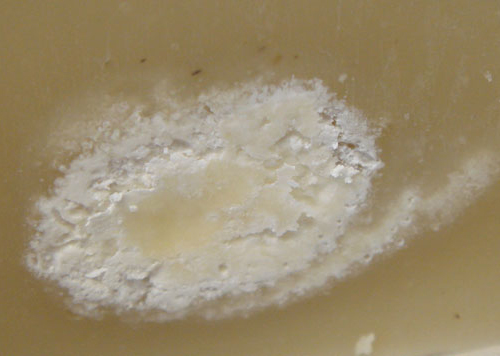
Overheating can occur with certain fragrances (FO's & EO's), if Honey or Milk soaps are insulated, or when the soap gremlins are just plain feeling mischievous! The result can be anything from darkened looking soap, crust and cracks on the surface of the soap, or even a volcano like spewing out of the mould!
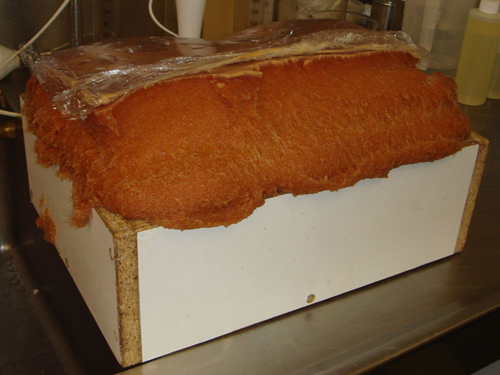
So these are just some of the challenges soapers face .. Most are purely aesthetic issues and with a bit of creative thinking can be played up to look like they were meant to be (discolouration/ash etc) .. Yet others, like the Lye Streaks, well blame it on the Soap Gremlins and consider it a lesson learned ;)
Wow! Excellent pics and very well explained too :)
ReplyDeleteThanks T, if you want to add or correct anything please feel free to!
ReplyDeleteExcellent descriptions of problems, I have some pics of some more if you would like them to post to your blog. Just email me. Cheers
ReplyDelete